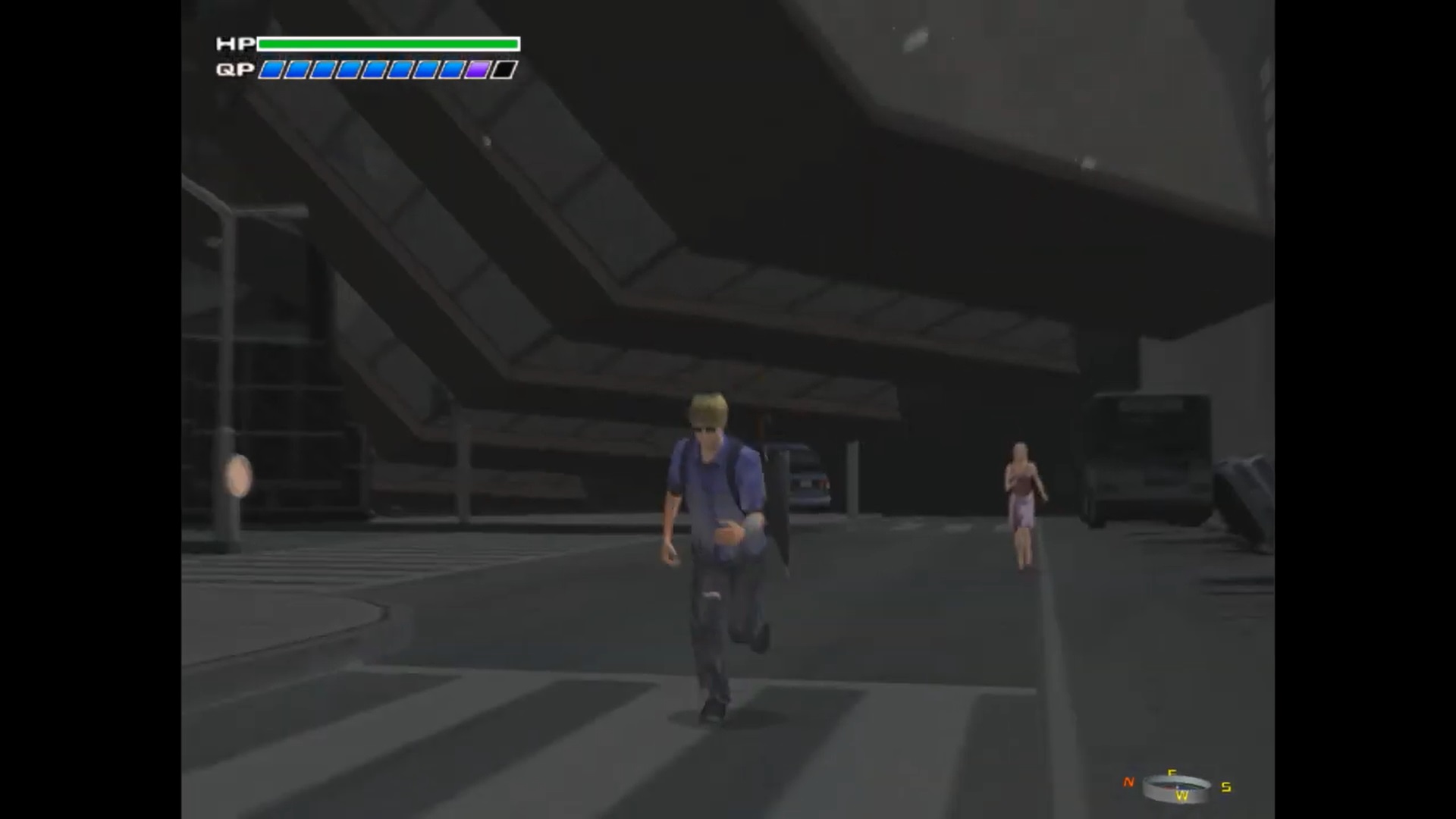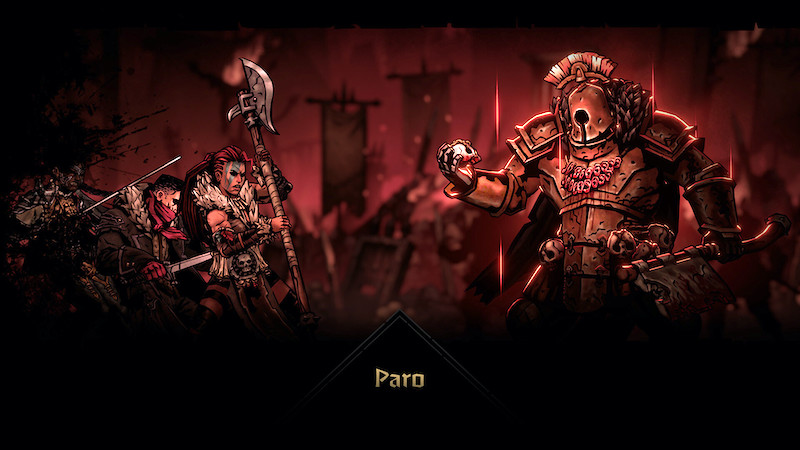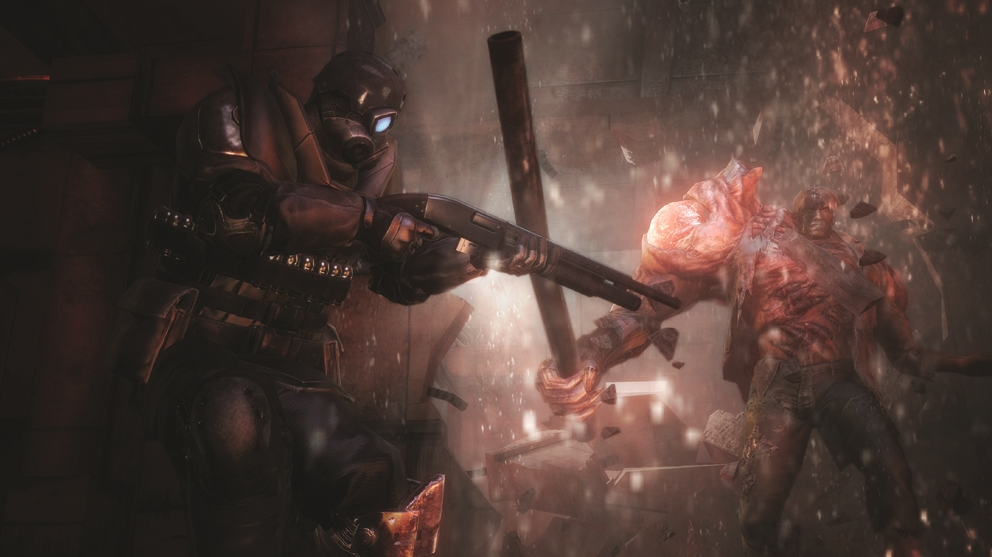
Disaster Report Teaches Players to Fear Their Environment
I’ve been afraid of a lot of different things while playing games, but Disaster Report is the one and only title to make me scared of buildings. And bridges. And just walking down the street. After a massive earthquake leaves a man-made island in shambles, you need to escape. That means staying hydrated, working on your climbing skills, and trying not to get flattened by a tumbling skyscraper. All of which teaches you a healthy fear of the environment, something few horror games have done before or since.
You start off on a bridge. Which is exactly where you want to be when the ground is shaking, right? It’s your first day as a reporter, although you probably won’t make it to the office today. You’ll definitely have a story to tell if you don’t get crushed, though. Immediately, you start in an overturned train car, giving you a look at the strange perspectives and broken landscapes you’ll be working through. The bridge outside has cracked and broken into pieces. Buses tumble over the edge into the waters far below. Every few minutes, some heavy impact or aftershock makes the whole screen shake. It’s a precarious position, and you need to work through it.
A lot of your time will be spent finding ways through the wreckage of this city. Disaster Report is littered with the broken remains of buildings, vehicles, and crumbling streets. Visually, none of it looks stable. You’ll tiptoe across exposed beams. Hunks of entire buildings will come crashing down alongside you. Highway bridges wobble as the ground shakes beneath you. Whole chunks of floor and street fall alongside you. It’s interesting how I take for granted this sense of stability I get from the structures around me, in games and in real life. Something about seeing these buildings and streets all moving, tilting, and crumbling instantly made me uneasy throughout the game.

The constant aftershocks and small quakes make this all feel worse. While exploring the world, you’ll often see the screen start to rumble. This means a dangerous quake is coming, or that some large object is falling apart. While you’re in obvious danger from falling objects in these moments, you can also get hurt by getting knocked down from the shaking itself. During these times, you can hit a button to brace yourself if you want to stay on your feet. It’s a good way to keep from slipping and hitting your head, as it’s easy to take a fall if you keep moving during a quake.
The trouble is, this also makes you stationary, which can be a bad thing in Disaster Report. As I said, whole buildings can come tumbling down during these quakes. I’ve looked up to see an entire office building tipping towards me. I didn’t think it would quite reach me, but I was wrong, there. In that moment, I had to run to escape, even if it put me at-risk of falling. It can be hard to guess whether to hang tight or run. Making that call was easily one of my biggest sources of unease throughout the game.
This feature instilled a constant wariness in me. Walking down a street lined with bridges and buildings is rarely a concern in a game. I don’t worry much about stationary cars and things like that. In this game, though, those things can start moving at any time, turning from background features into colossal hazards. Anything around you – the ground, the buildings, the structure you’re standing in – can turn on you at any time. If the ground’s shaking, ANYTHING might turn into a lethal hazard. It’s definitely thrilling to find yourself running from a falling skyscraper, watching its shadow creep ever closer to you. It also leaves you nervous any time the ground shakes, or if you see some structure starting to wobble. The world around you feels like it’s out to get you. And it usually is.

You may need to run to live in those instances, but Disaster Report doesn’t always make that easy. Your character has two health bars: HP and QP. Health is pretty standard, and goes down when you’re hurt by falling debris and other things. QP is your general stamina, which goes down when you do any activity. Climbing, running, walking – they all drain it to some degree. It can be restored with water, which can be found in fountains and sinks, thankfully. You can also carry refillable water bottles. If that bar ever drains fully, you’ll find it hard to move, and everything you do will drain health. Death comes pretty fast if you don’t stay hydrated.
Now, water is plentiful, sure. But the game tends to trick you into draining your bar often. With all of these constant quakes, it’s hard to know what’s going to start falling. The ground you’re standing on could drop out from under you. Narrow platforms can sway back and forth. You might find an entire bridge tipping towards you. Bracing yourself can save you some health, but it often felt safer to run or hurry through what I was doing. This drains your QP faster, but it beats getting squashed by a falling bus. You can die quickly and easily from the environment falling apart, so the game encourages you to rush.
This meant draining my QP and HP often in Disaster Report. I’d take quite a few bumps and falls, draining my resources, but wouldn’t die outright. Still, a fall while running might slow me down enough that the platform I was on would drop out from under me. And even if it didn’t, my water could run out from all the extra panicking when I should have been taking things slowly. You can only carry so many resources in your character’s backpack, so you can’t just abuse items to get through the game. You need to be careful, even if panicking and running feels like the smarter option. And often is.

The game put me at war with myself as I played it. Should I run? Hunker down even as the ground bucked under me? It is a hard decision, especially as the buildings around me sway dangerously. The game constantly pushes you to panic with its shaking structures and falling debris, but it also asks you to stay calm and take care. It continually changes what disasters are coming your way, though, leaving with a choice to make. Guess wrong and you’ll die now. Or make it easier to die in a few minutes. You’re always at risk, and no answer feels like the right one. And all the while, the environment threatens you at every step.
Disaster Report taught me to fear the structures and world around me. To worry about the ground beneath my feet. Anything could turn on you in any moment, with lethal consequences. What you do to avoid those consequences was also hard to decide, as no one way was truly safe. These feelings turned this game into a terrifying experience as I struggled to figure out how to survive a natural disaster. Turns out an office building is far more dangerous than any zombie or ghost I’ve run into before.




